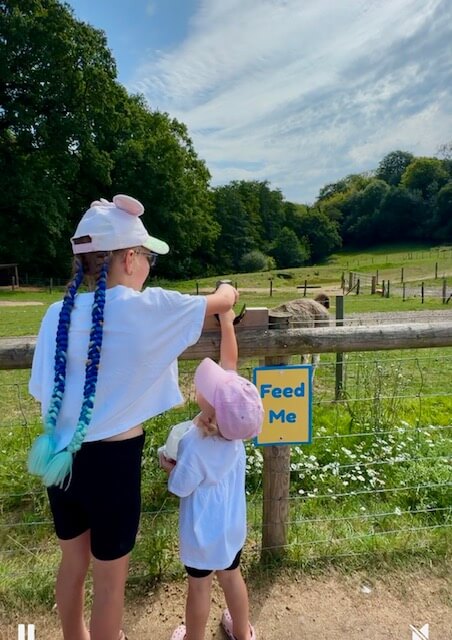Amazing Animals at Godstone Farm!
We thought we’d start a series of blog posts, exploring our amazing animals and fantastic farm features! Expect a new blog post every fortnight, with the focus on a different letter of the alphabet.
Let’s start at the very beginning with A!
A is for AMAZING ANIMALS
You’ll find over 500 animals at Godstone Farm, ranging from the very small to the very large, and plenty more in between. When you visit the farm, make sure to look at your welcome leaflet as this will show the locations of many of our animals, for example the animal barn, rabbit walk and reptile house. We don’t want you to miss out on anything!
ALPACAS
Originally domesticated over 6000 years in the Andes mountains, did you know that alpacas are members of the camel family?
Alpacas are often confused with llamas but there are a few differences that should help you spot which are which! Alpacas are slightly shorter than llamas and also have shorter ears. Look at a llama – you’ll notice they have banana shaped ears, whereas alpacas have shorter more rounded ears. Alpacas also have more hair on their faces, which are shorter than a llamas. Alpacas are quiet and shy compared to llamas and prefer to live in herds, whereas llamas are more independent, solitary animals.
Alpaca wool is very soft, which is the reason why it is used to make warm clothes and blankets. A female alpaca is called a Hembra and a male is called a Macho. A baby alpaca is known as a cria and a female alpaca will give birth to their single cria, after a gestation period of 11-12 months. As with lots of other amazing animals, once the cria is born they will impress by walking shortly afterwards. We have a small herd of female alpacas and a small herd of male alpacas at Godstone Farm.
Have you spotted our newest additions? Crias Steve and Mary were born in October and December 2024. We’re sure you’ll agree they’re absolutely adorable!

ANIMAL FEED (ALFALFA PELLETS)
You can purchase small bags of animal feed in the Gift Shop, or when pre-booking your tickets online, to feed some of the animals at Godstone Farm.
Around the farm you’ll spot fun animal feeders that are identified by ‘Feed Me’ signs. You can feed the goats, sheep, cows, llamas and alpacas at Godstone Farm. We kindly ask that you please don’t feed any other animals with this food as nutritionally it’s not the right food for them.
There are often other feeding opportunities at the farm, for example at certain times in the animal interaction barn you can join in with feeding some of our smaller animals, or our donkeys or Shetland ponies. Please ask a member of staff when you are in this area if it’s possible. Check out animal interactions timings on your welcome leaflet. When pig feeding is scheduled, a member of our livestock team will have food that you are able to throw in to the pig enclosures, encouraging them to root with their snouts, which is a great example of animal enrichment. Thank you for only feeding the animals with the food that is designed for them.

ANT FARM
Ants are fascinating insects aren’t they! Take the time to observe a colony of ants and notice how they communicate and help each other out. If you look carefully whilst you’re in The Reptile House, you’ll spot our ant farm. Discover how the ants work well as a team, with each ant performing specific roles to benefit the colony. Ants create great things by working together and as humans we can too!
Next time we’ll be discovering what you can find at Godstone Farm beginning with the letter B!







